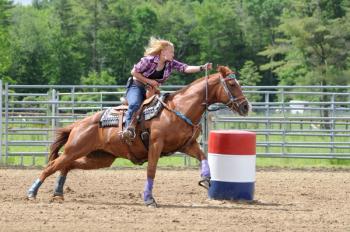
- dvm360 September-October 2025
- Volume 56
- Issue 5
- Pages: 46
Raising the standard: Arthritis awareness in veterinary practice
May is Arthritis Awareness Month, which is a good time to review our approach to this common diagnosis in small animals.
As veterinary professionals, a proactive client education and management approach can profoundly improve the quality and healthspan of our patients’ lives, starting in puppyhood and continuing through end-of-life care.
The common dismissal of arthritis
Osteoarthritis (OA) is the most common cause of chronic pain, affecting at least 1 in 5 dogs and 40% to 90% of cats during their lifetime.1-3 Yet, many cases remain undiagnosed, as clients often mistake subtle signs of discomfort for normal aging. Early symptoms, such as reluctance to exercise, difficulty rising, or behavioral changes, can be easily overlooked, leading to delayed intervention and unnecessary suffering. The consequences are significant: chronic pain, reduced mobility, muscle atrophy, weight gain, and a diminished quality of life, sometimes culminating in euthanasia sooner than would have been necessary with appropriate treatment.
Working exclusively in end-of-life care, Caring Pathways professionals have seen an overwhelming number of families who would have benefited from more extensive discussions regarding arthritis management in the early stages of the disease. Importantly, OA can affect dogs and cats of all ages, not just seniors, with a notable proportion of young dogs already showing radiographic evidence of disease.4
The role of veterinary professionals
Veterinary teams are uniquely positioned to make a difference. Early detection and intervention are critical, as OA is a degenerative, incurable disease that can only be managed, not reversed. We can slow disease progression and maximize comfort by routinely assessing mobility, educating clients about early warning signs, and implementing individualized, multimodal management plans.5 Client education is paramount, and owners need guidance to recognize subtle behavioral changes and understand that early treatment can prolong their pet’s active years. Veterinary professionals must confidently communicate the prevalence, risk factors, and management strategies for OA, ensuring that pain and mobility are treated as vital signs during every exam.
Encouraging pet families to begin targeted exercise routines, focused on balance and strength, and training pets to accept mobility aids—especially ramps and mobility aid harnesses—before those pets begin experiencing significant pain, would alleviate many struggles families face in the later years of their pet's life. Utilizing species-specific disease screening tools, validated pain scales, and quality-of-life tools can help facilitate conversation and collaboration between clients and veterinary teams.
Spotlight on leading initiatives
Canine Arthritis Management
Founded by Hannah Capon, MA, VetMB, MRCVS, Canine Arthritis Management (CAM) is an educational initiative dedicated to transforming the way arthritis is recognized and managed in dogs. CAM’s mission is to provide education and support to both professionals and caregivers, promoting early identification and evidence-based, multimodal management of OA.
Its resources include the following:
- Practical guides for diagnosis and long-term management
- Educational talks, webinars, and professional development
- Teleguidance services for tailored case support
- A strong advocacy for changing perceptions of pain and OA in dogs
CAM’s vision is to reduce unnecessary suffering and delay elective euthanasia by fostering a collaborative approach between veterinary professionals and caregivers, ensuring dogs live longer, more comfortable lives.
Canine Arthritis Resources and Education
Founded by Kristin Kirkby Shaw, DVM, PhD, MS, DACVS-SA, DACVSMR, Canine Arthritis Resources and Education (CARE) provides free, expert-developed resources for both clients and veterinary professionals.
CARE’s offerings include the following:
- Articles, videos, and exercises to aid in early detection and management
- Tools, forms, and educational materials for clinical use
- RACE-approved on-demand webinars for vets and technicians on how to diagnose and manage OA
- A bridge between knowledge and action, empowering veterinarians to deliver comprehensive OA care even beyond the exam room
CARE’s resources help veterinary teams continue the OA conversation with clients, supporting evidence-guided treatment and encouraging proactive management to keep dogs active and thriving.
Moving forward: A call to action
Arthritis awareness is not a 1-month campaign—it is an ongoing commitment to elevating the standard of care for our canine patients. By leveraging the expertise and resources of groups like CAM and CARE, veterinary professionals can achieve the following:
- Stay updated on best practices and consensus guidelines for OA management
- Equip clients with the knowledge to recognize pain early and seek timely intervention
- Educate clients on at-home training and exercise tools to help prepare for a possible arthritis diagnosis
- Foster a collaborative, supportive environment for lifelong canine health
Let’s champion arthritis awareness in our practices—not just in May but every day. Together, we can give dogs more years of comfort, mobility, and joy.
References
- Johnston SA. Osteoarthritis. Joint anatomy, physiology, and pathobiology. Vet Clin North Am Small Anim Pract. 1997;27(4):699-723. doi:10.1016/s0195-5616(97)50076-3
- Slingerland LI, Hazewinkel HA, Meij BP, Picavet P, Voorhout G. Cross-sectional study of the prevalence and clinical features of osteoarthritis in 100 cats. Vet J. 2011;187(3):304-309. doi:10.1016/j.tvjl.2009.12.014
- Lascelles BD, Henry JB 3rd, Brown J, et al. Cross-sectional study of the prevalence of radiographic degenerative joint disease in domesticated cats. Vet Surg. 2010;39(5):535-544. doi:10.1111/j.1532-950X.2010.00708.x
- Enomoto M, de Castro N, Hash J, et al. Prevalence of radiographic appendicular osteoarthritis and associated clinical signs in young dogs. Sci Rep. 2024;14(1):2827. doi:10.1038/s41598-024-52324-9
- Cachon T, Frykman O, Innes JF, et al. COAST Development Group's international consensus guidelines for the treatment of canine osteoarthritis. Front Vet Sci. 2023;10:1137888. doi:10.3389/fvets.2023.1137888
Articles in this issue
22 days ago
The role of diet in feline diabetes mellitusabout 1 month ago
Before we were veterinary professionals, we were pet parentsabout 1 month ago
Managing equine back painabout 1 month ago
Incorporating disaster readiness in a veterinary facilityabout 2 months ago
Products+Services360: Veterinary Spanish guide & other productsabout 2 months ago
Shortening scheduling callsNewsletter
From exam room tips to practice management insights, get trusted veterinary news delivered straight to your inbox—subscribe to dvm360.






